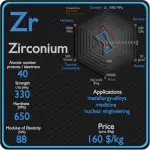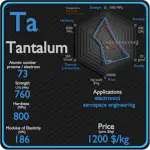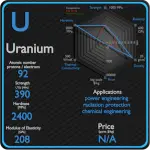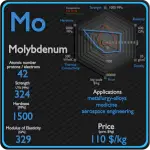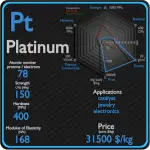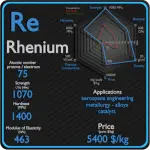This article contains comparison of key thermal and atomic properties of titanium and tungsten, two comparable chemical elements from the periodic table. It also contains basic descriptions and applications of both elements. Titanium vs Tungsten.

Titanium and Tungsten – About Elements
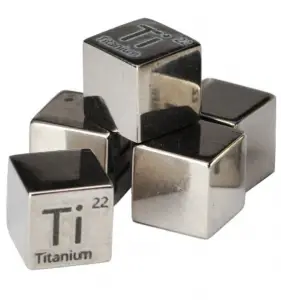
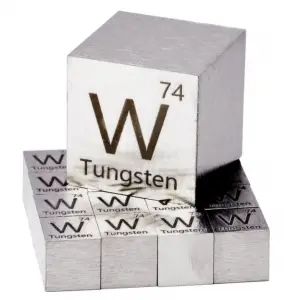
Source: www.luciteria.com
Titanium and Tungsten – Applications
Titanium
The two most useful properties of the metal are corrosion resistance and strength-to-density ratio, the highest of any metallic element. The corrosion resistance of titanium alloys at normal temperatures is unusually high. These properties determine application of titanium and its alloys. The earliest production application of titanium was in 1952, for the nacelles and firewalls of the Douglas DC-7 airliner. High specific strength, good fatigue resistance and creep life, and good fracture toughness are characteristics that make titanium a preferred metal for aerospace applications. Aerospace applications, including use in both structural (airframe) components and jet engines, still account for the largest share of titanium alloy use. On the supersonic aircraft SR-71, titanium was used for 85% of the structure. Due to very high inertness, titanium has many biomedical applications, which is based on its inertness in the human body, that is, resistance to corrosion by body fluids.
Tungsten
Tungsten is widely used metal. Approximately half of the tungsten is consumed for the production of hard materials – namely tungsten carbide – with the remaining major use being in alloys and steels. Mining and mineral processing demand wear-resistant machines and components, because the energies and masses of interacting bodies are significant. For this purposes, materials with the highest wear-resistance must be used. For example, tungsten carbide is used extensively in mining in top hammer rock drill bits, downhole hammers, roller-cutters, long wall plough chisels, long wall shearer picks, raiseboring reamers, and tunnel boring machines. The remaining 40% is generally used to make various alloys and specialty steels, electrodes, filaments, wires, as well as diverse components for electric, electronic, heating, lighting, and welding applications. High-speed steels are complex iron-base alloys of carbon, chromium, vanadium, molybdenum, or tungsten (as much as 18%), or combinations there of.
Titanium and Tungsten – Comparison in Table
| Element | Titanium | Tungsten |
| Density | 4.507 g/cm3 | 19.25 g/cm3 |
| Ultimate Tensile Strength | 434 MPa, 293 MPa (pure) | 980 MPa |
| Yield Strength | 380 MPa | 750 MPa |
| Young’s Modulus of Elasticity | 116 GPa | 411 GPa |
| Mohs Scale | 6 | 7.5 |
| Brinell Hardness | 700 – 2700 MPa | 3000 MPa |
| Vickers Hardness | 800 – 3400 MPa | 3500 MPa |
| Melting Point | 1668 °C | 3410 °C |
| Boiling Point | 3287 °C | 59300 °C |
| Thermal Conductivity | 21.9 W/mK | 170 W/mK |
| Thermal Expansion Coefficient | 8.6 µm/mK | 4.5 µm/mK |
| Specific Heat | 0.52 J/g K | 0.13 J/g K |
| Heat of Fusion | 15.45 kJ/mol | 35.4 kJ/mol |
| Heat of Vaporization | 421 kJ/mol | 824 kJ/mol |





